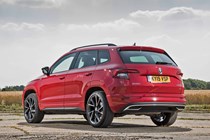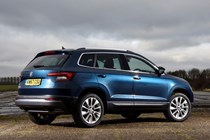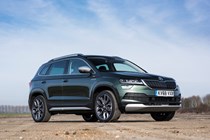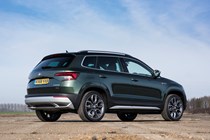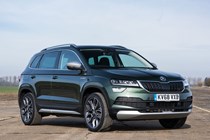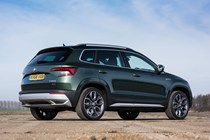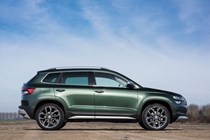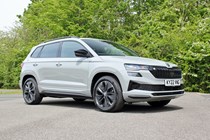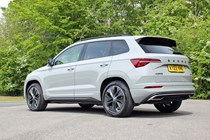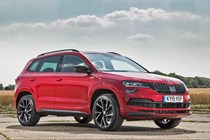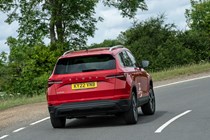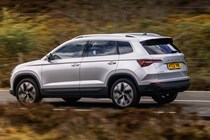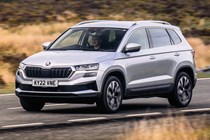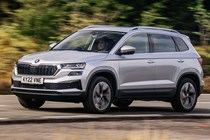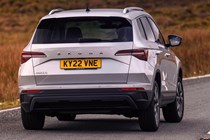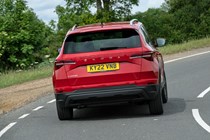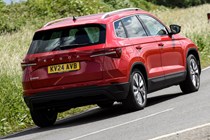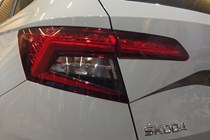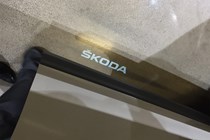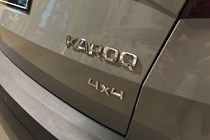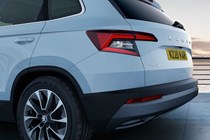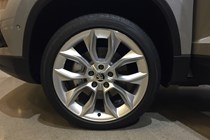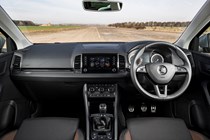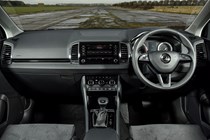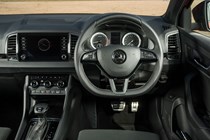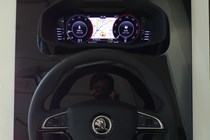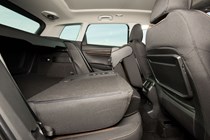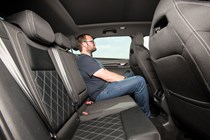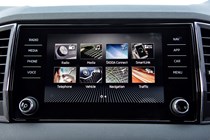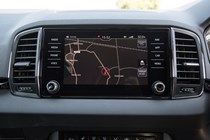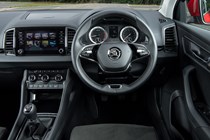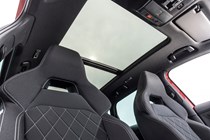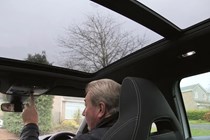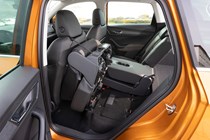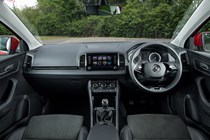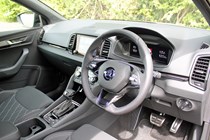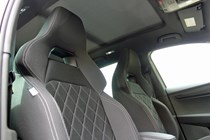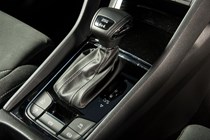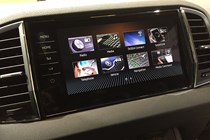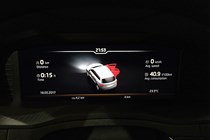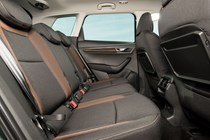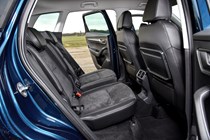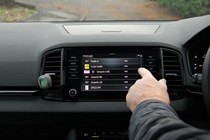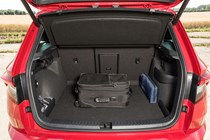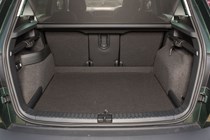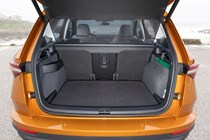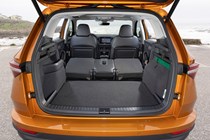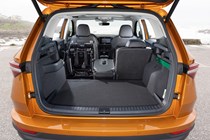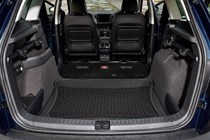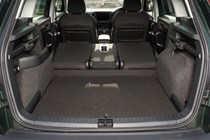
Skoda Karoq long-term test
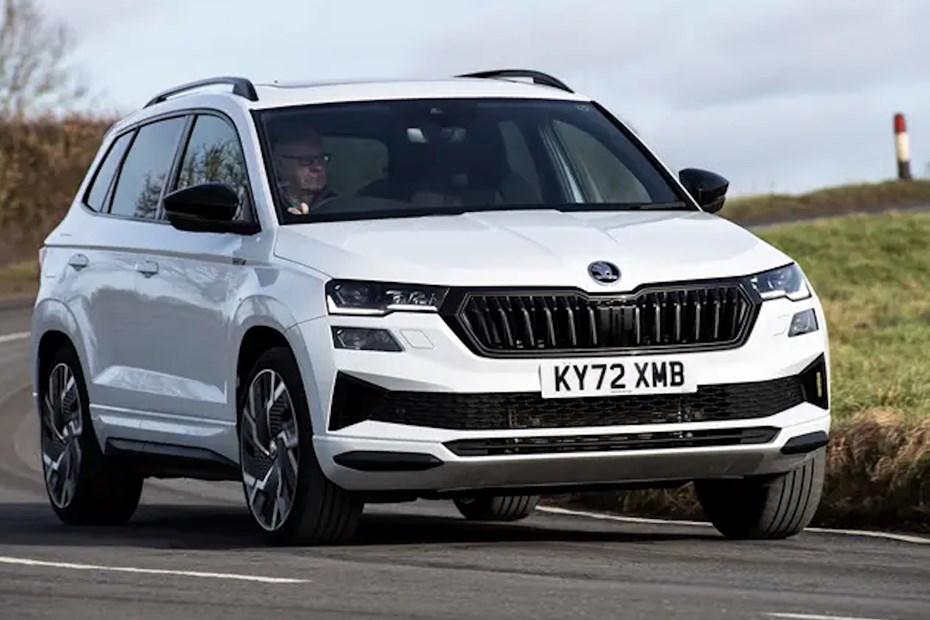
Having returned the Skoda Fabia, Cat Dow and Percy Lawman take custody of the Skoda Karoq, facelifted in 2021 with a restyled front and rear and updated with a slew of cabin comforts. We’ll be adding some mileage in the coming months to assess if those changes give us a change of heart, or not, about the Karoq from our original assessment.
Update 1: Welcome
Update 2: One month in
Update 3: Snow Joking
Update 4: Out and about after dark
Update 1: Welcome
Switching out the Skoda Fabia for the Skoda Karoq takes me from a supermini to an SUV. It’s quite the change but one I prefer, since the dog can go in the boot, rather than on the rear bench.
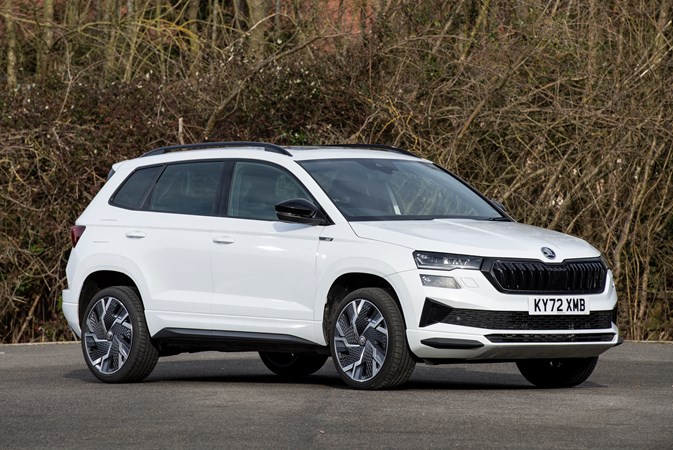
In motor journaling circles, we do like to change up the brands so we have a fuller flavour of the market and performance of the cars we test. Circumstances created a situation where I would be hanging around with the Skoda brand for a while longer and it’s enabled an interesting opportunity for comparison.
From the city-friendly dimensions of the Fabia hatchback to the bulkier SUV-style of the Karoq, the vehicles undoubtedly feel different. Not that one is better than the other. They’ve both got some brilliant attributes.
The high riding position is much sought-after in SUV-buying circles. It really does feel good, especially as we approach winter with the dark nights drawing in from late afternoon.
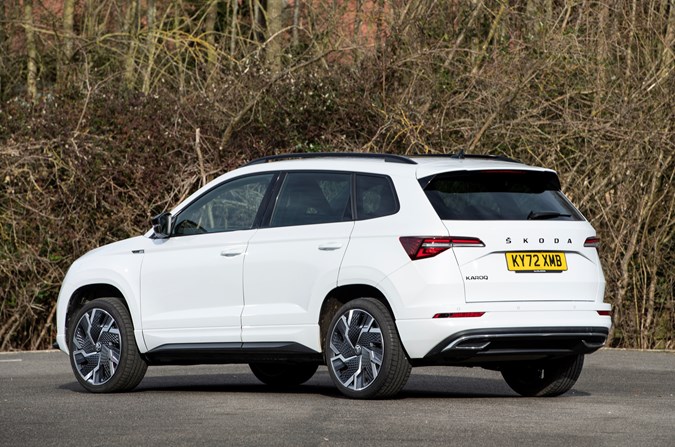
The Karoq has been well-specced in the Sportline trim, which Skoda tells us is its most popular trim level. It has a 1.5-litre petrol engine with a seven-speed automatic gearbox. I’m not going to lie. It wouldn’t be my first choice, but I’m more familiar with autoboxes having tested a number of electric vehicles (EVs).
The proportions of the Karoq from any angle are pleasant. The bonnet is not so long as to make the car look or feel unwieldy and the design of both the grille and LED headlights are signature Skoda, making the car easy to pick out in a car park full of white SUVs (a surprisingly popular combo).
The Skoda Karoq is clearly all about comfort. There’s some seriously sweet features like the Skoda puddle lights, the panoramic sunroof, dual-zone climate control, heated steering wheel and heated seats. We also have the KESSY (keyless entry system) which featured in the Fabia too.

The Karoq is a spacious SUV. Up front, the driver and passenger have plenty of room and the cupholders are more thoughtfully located this time around (well, still a bit on the tight side). The steering wheel and drivers seat are manually adjustable. (Special thanks to Daddy Dow for being my driver seat model! He found it very roomy too.)
I’m a big fan of the electric boot…As someone vertically challenged, it is significantly easier to press a button then heave a tall tailgate down from your tiptoes, especially if the car is dirty. Skoda’s ‘Virtual Pedal’ is also helpful, enabling me to open the boot from the key or a button in the car.
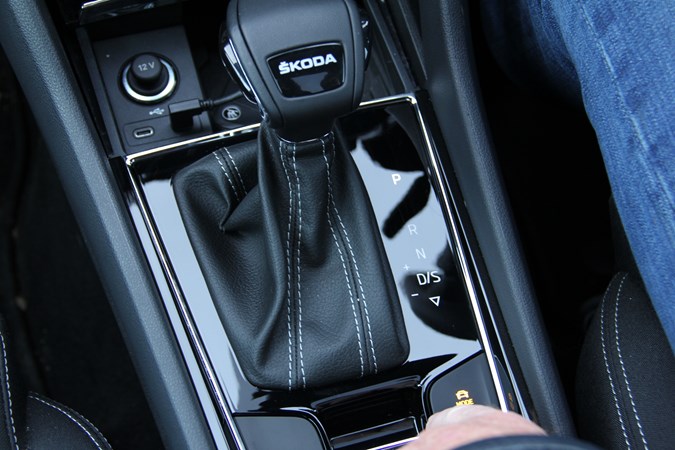
The Sportline spec has all of these features as standard and also includes sports seats in the Sportline fabric and fancy silver stitching. It’s attractive and practical for families.
The only add-on to this Skoda Karoq Sportline is the £600 Amundsen Package Plus, which features an 8” touchscreen, European navigation, voice control and integrated 4G connectivity. This means, unlike the Fabia, the Karoq has a mobile Wifi hotspot. The Karoq also has SmartLink+, which allows me to connect to Apple CarPlay, Android Auto and MirrorLink.
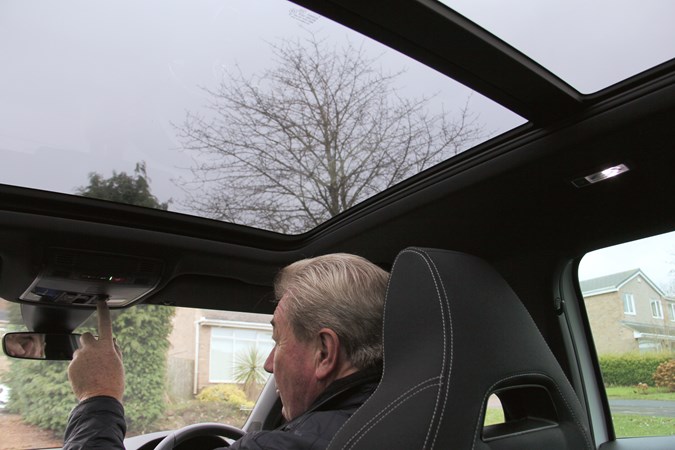
When considering other driver technologies, the Karoq Sportline is well-equipped. Cruise control with speed limiter, a customisable instrument cluster, parking sensors, rain-sensing windscreen wipers, driver fatigue sensor and adaptive matrix headlights is a sensational suite.
First impressions are good. This is a comprehensive package and seems generous, given the size of the vehicle and the £34,910 price tag. With the expectation of between 44.7-43.7mpg fuel economy, the Skoda Karoq SportLine also seems pretty affordable to run. I’m looking forward to the next six months of driving.
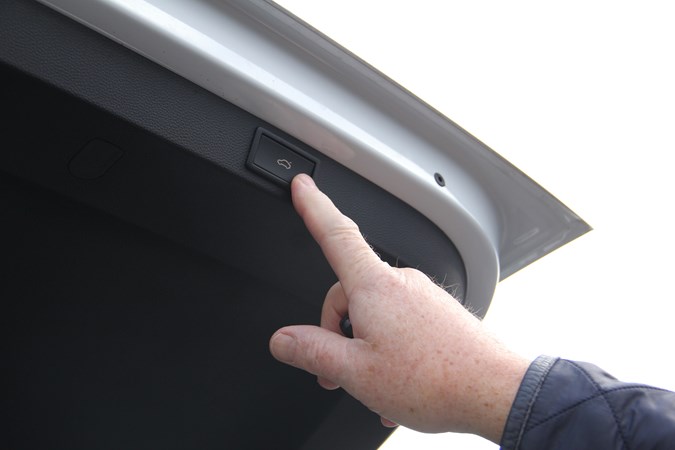
Update 2: One month in
A month in, I’m finding the Karoq a relaxing ride. The Skoda Karoq SportLine comes with a seven-speed automatic box which is quiet and smooth, but doesn’t respond well to aggressive demands.
This is one car you have to take your time in, queue patiently and relax at junctions. Having found myself in more tea-time traffic than I’m used to, of late, roundabouts can be a bit frustrating. There’s a split-second between pulling away, pressing the throttle a touch harder and getting the desired oomph, prompted by a gear shift.
Initially I thought I might have left the drive mode in ‘Eco’, which would explain the lag, but no, it’s in ‘Normal’. To compensate, on occasion, I’m finding myself selecting ‘Sport’ mode and using the flappy pedals either side of the steering wheel.
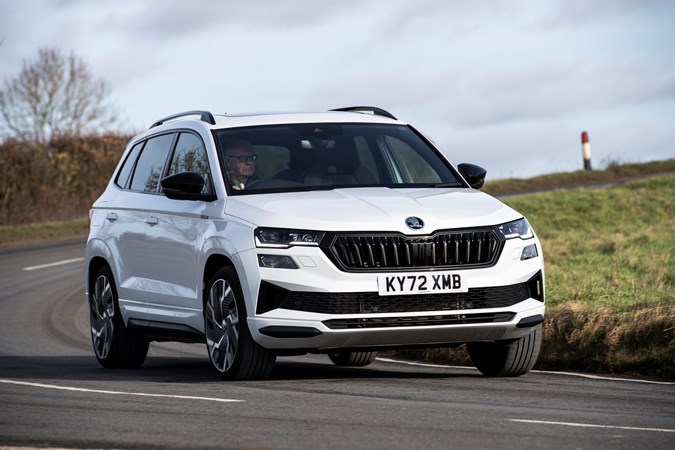
By manually shifting down, that split-second halves again. (Well, that’s what Sport mode is there for, right?! Hee, hee.)
Once it gets going, however, the Karoq shifts plenty quick enough in Normal and Sport mode. There’s a bit more engine noise in Sport mode, as you’d expect, but the ride is notably quiet. For the purposes of fuel economy, this driving style isn’t recommended too frequently…I’m currently averaging about 36.7mpg—well shy of the WLTP figures. (Will. Try. Harder.)
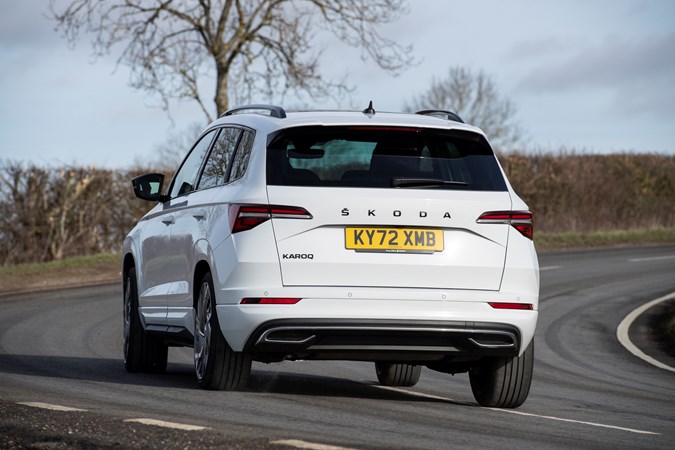
Internally, the cabin space really carries a ‘wow’ factor. It’s just so roomy. The dog crate is marginally too long to have the rear seats up, but the 70/30 split means my one regular backseat passenger is still comfortable enough.
Up front, the sports seats are fairly comfortable, but the driver’s seat could do with more lumbar support. I have fewer gripes with the cupholders (winning!) and the arm rest design is also a bit more practical than the Fabia, doubling up as another cubby for more detritus.
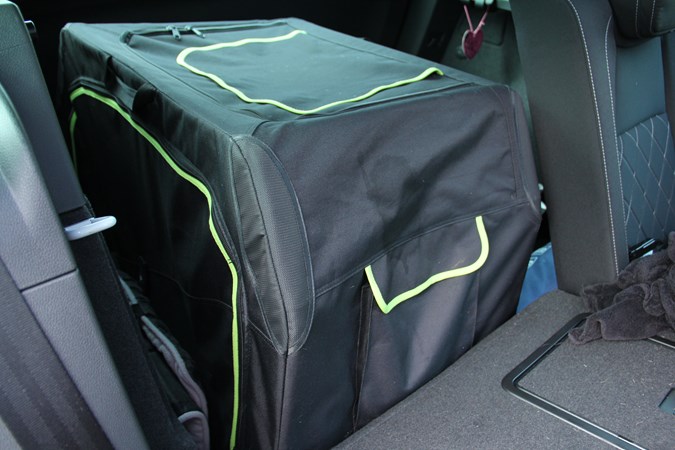
The 4G connectivity, offered as part of the SmartLink service, with one-year’s infotainment online works significantly better than that in the Fabia. In fact, the whole digital experience with the Skoda Karoq has been better from the get-go. Again, I wonder how much of this comes from the sense of familiarity, having had the use of the Fabia for six months and how much is simply down to the infotainment suite working as it should.
The other remarkable feature of the Karoq has been the responsiveness of the adaptive headlights. For drivers who have used adaptive headlights and have felt the irrational embarrassment of the car not dipping to full beam quickly enough (or at all) during a night drive, the Skoda Karoq circumvents such ill feeling with its matrix technology.
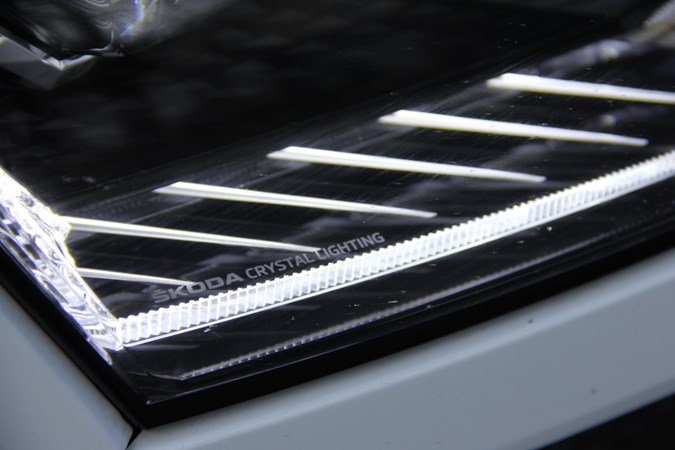
The Karoq doesn’t simply automatically detect oncoming traffic and dip the lights as appropriate. It maintains the full beams for all areas ahead, but the paths down which the light beam would aggravate other road users.
By sensing where and when to place the beam, there’s less to concentrate on during late night, pitch dark journeys. Without doubt, relieving that part of cognitive load driving requires is genuinely valuable.
Update 3: Snow joking
In the run-up to Christmas, I’ve been out and about fetching gifts and meeting up with friends I haven’t seen all year. The Karoq has proved incredibly adept at swallowing all manner of luggage and hauling us around.
It’s been a smile-inducing joy to stick the heated steering wheel and heated seats on on those frosty mornings. It’s been bitterly cold, but popping the engine on to warm, with the blowers, is easy-peasy.
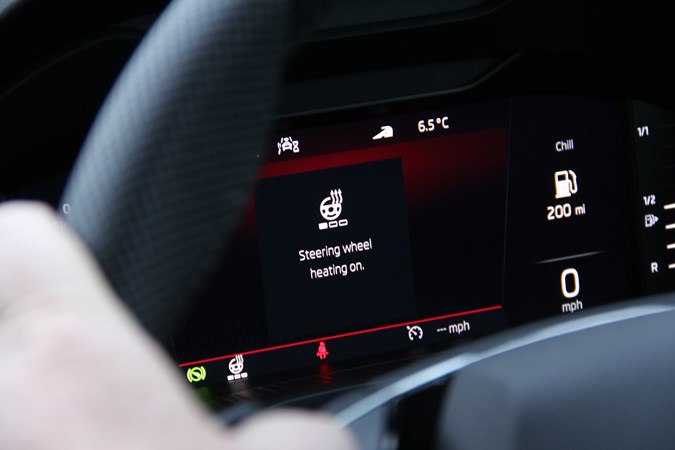
What’s more, stepping out of the car to clear the ice using the ultra-handy ice scraper, located in the fuel port door, has made prompt work of getting on the road with minimal delay and left me feeling especially smug, as I pass my neighbours reaching for the de-icer.
These little accessories, including the umbrella found under the passenger seat, was a Skoda decision I highlighted when reviewing the Fabia and such thoughtfulness still continues to impress. Making life easier for drivers plays into that respectable value-for-money reputation Skoda has garnered.
The steering wheel controls have also proved incredibly helpful in avoiding weeks and weeks of Christmas songs, enabling me to flick through the stations for tunes I appreciate. The Skoda’s DAB radio is really effective at tuning between FM and DAB, depending on which signal is stronger – so much so, you barely notice the switch.
I’ve also been using Android Auto more, since I finally remembered to take my spare cable into the car. Skoda has kindly provided an adaptor for the USB-C ports and the charge is much quicker with the cable, then through wireless charging pad.
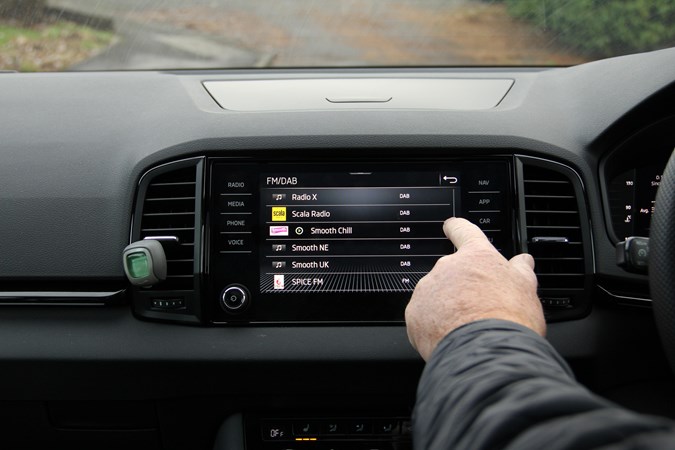
I was South when the ice and snow first hit the North-East, where I next travelling. The journey was surprisingly smooth, largely thanks to the hard work by the National Highways agency staff who – it has to be acknowledged – work in some of the most challenging conditions to keep the roads clear.
That, of course, doesn’t account for the handful of numpties making questionable decisions as they pootled in the middle lane, but I digress. Arriving into the cul-de-sac proved more of a challenge: I turned into the drive and the car continued straight on, sliding on the ice. My efforts to brake were futile and we knocked into the kerb, narrowly avoiding the fence ahead.
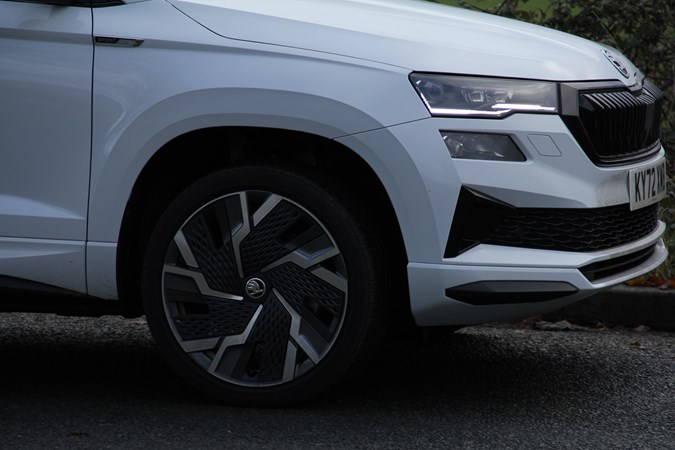
While no one was hurt, the incident demonstrated how illusory SUVs can be. With all this room, high ride height and unequivocal presence on the road, there’s a tendency to develop a complacency—a sense that such bulk can tackle anything and it can make you feel invincible. But without all-wheel-drive and winter tyres, an SUV is no more capable of coping with ice and snow than any other non-ruggedised vehicle.
Ice slides notwithstanding, the Karoq continues to be a very relaxing drive, which at this time of year with more hazards on the road, is welcomed.
Update 4: Out and about after dark
I’ve just taken over our Skoda Karoq long-termer from Cat Dow and from what we’ve experienced so far, it’s a big thumbs up for sure. Expanding on Cat’s experiences, I thought that a snippet of night-time driving wouldn’t go amiss.
We all frequently read car reviews, but it’s not that often that ‘night-time driving’ features in write ups. Over the years, lighting technology has come on leaps and bounds. Think back to the 1980’s [if you can remember that far back]. The ‘In’ thing then was the ‘Sealed Beam’ unit with some manufacturers introducing halogen bulbs as a step upwards in technology.
The halogen had a good long run and even today if you look around an automotive factor parts shop, you’ll still see plenty of them for-sale. But the halogen bulb is a hungry animal, draws lots of current and gets really hot.
In the 1990’s the ‘HID’ [High Intensity Discharge] bulb hit the scene. Part of that technology was Xenon lamps which although quite expensive, had a good take up in the automotive sector. Saying that, the HID wasn’t without its troubles and could be problematic. For instance, the output can drop off over time. Typically, up to 70% over a 10,000-hour period.
Today, many manufacturers are steered towards LED [Light Emitting Diode] technology. An LED is much more efficient than a halogen bulb drawing only a fraction of the current and generating a much smaller amount of heat. This ‘low current/high efficiency’ route is now becoming increasing important. If you run an electric vehicle it’s pretty well essential.
Our Karoq is fitted with ‘Skoda’s Matrix LED’ and adaptive front lighting system. At the heart of the system is array of LED’s, mirrors and sensors all working in unison to identify changes in traffic conditions such as a corner or sharp bend. It can also adjust to varying weather conditions and is intelligent enough to sense oncoming traffic. All-in-all, it’s a pretty smart affair.
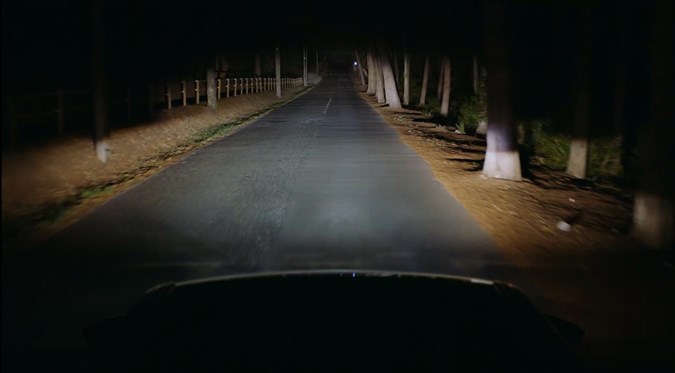
As you drive, the Matrix system is constantly adjusting itself to suit the road conditions. Matrix LED’s are often called ‘Adaptive Headlights’.
So, time to go out and about. Firstly, to introduce you to night-time driving, the Karoq illuminates a very nice ‘Skoda’ welcome logo onto the ground when opening the driver’s door.
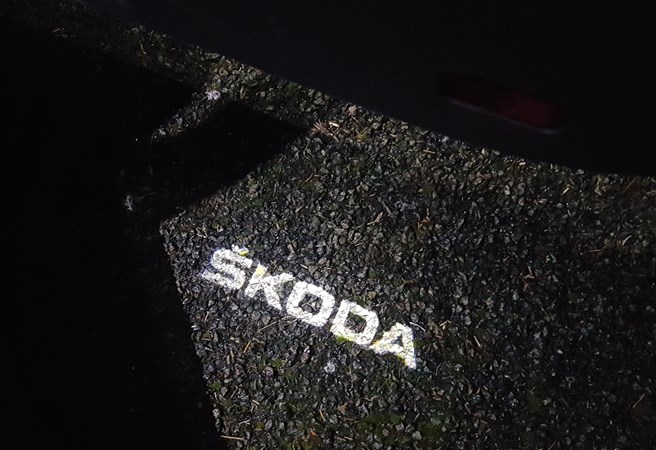
For the driver inside the cabin, our ‘Sportline’ trim level Karoq also has the LED interior light package fitted. This gives the driver various options relating to ambient cabin lighting. We had the cabin set to ‘Red’ but users have up to 36 different alternative lighting colours and options, depending on the mood – so you’re really spoilt for choice.

So, with the external lights on, it’s time to get out on the road. Leaving the village onto a main road and the Matrix system throw a nice wide strip of light concentrated in the near field of view. My take of the light is that rather than a ‘warm’ yellowy feel, there’s a very nice bright ‘white’ look to the light. In the past, and certainly with some older technologies, a yellow tinge seemed to be thrown in for good measure.
Out in front, the road is clear so I engage the ‘high-beam’ setting and am immediately impressed with what the matrix reveals. Imagine yourself in the theatre as the curtains begin to open. The lighting system expands on the near field taking in a much broader field of view. The system is akin to a curtain opening as the light pattern now includes a much wider near field and extended far field.
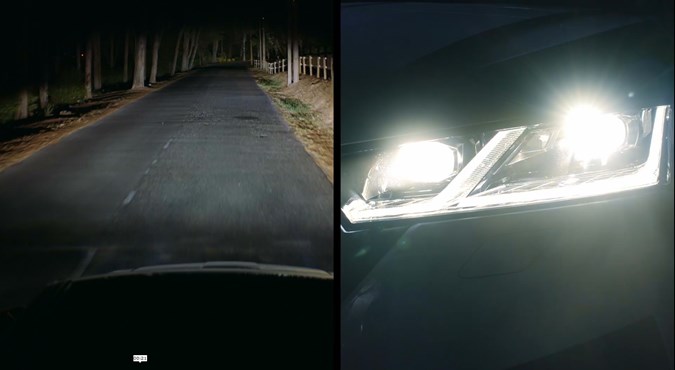
With no oncoming traffic, the Matrix system lights up the full road with an extended field of view as can be seen with both sections of the LED array being active.
If a car then approaches towards you [and you don’t dip in time] – the system does it for you thus preventing you blinding any oncoming driver. The switching and reaction time to ‘dip’ is pretty well spot on when compared to doing it manually. Deliberately leaving the high-beam enabled forces the system to quickly react. There was little if any difference between the two.
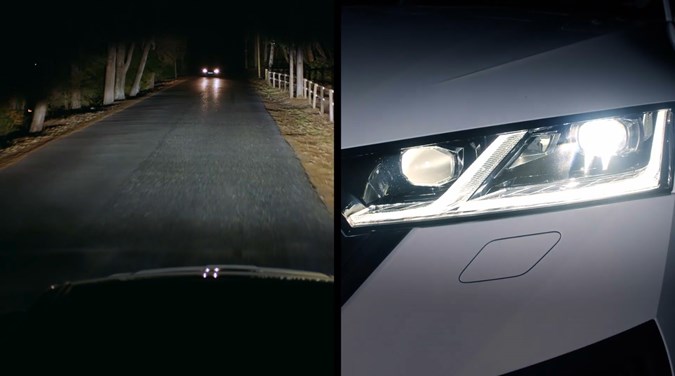
Just as important, the dip setting enhances the nearside kerb illuminating pedestrians. The image below shows the enhanced area although all of the screen shots here are from an EU location.
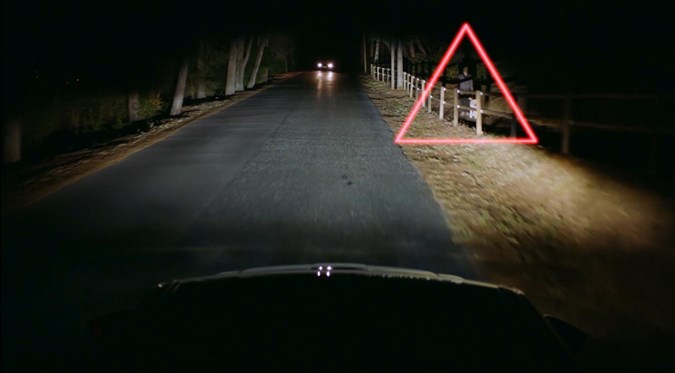
When corning, the matrix also reveals yet more of its smart technology. Imagine sitting at a ‘T’ junction and you’re waiting to turn right. On entering the junction and as the steering wheel is turned, the adaptive system pans a very broad light in the immediate very close field, just around the front corners of the car. The field would be similar to that of a short-range fog light, but its white and intense, allowing you see kerbs very easily. A major plus point is that it also worked very well when parking, by illuminating the near verges. This would hopefully help eliminate any chance of ‘kerbing’ those nice new alloys.

On board, the driver can feel super confident whilst motoring in the dark and Skoda certainly have a great solution which seems to be available across most of their range.
Although the videos are specifically based around the Octavia, Skoda’s Matrix LED technology is fitted to many other models within the range.
Screen grabs copyright © Skoda Auto – Matrix LED Headlights.



